Intelligent And Playful Dolphins
Category : Aquatic World
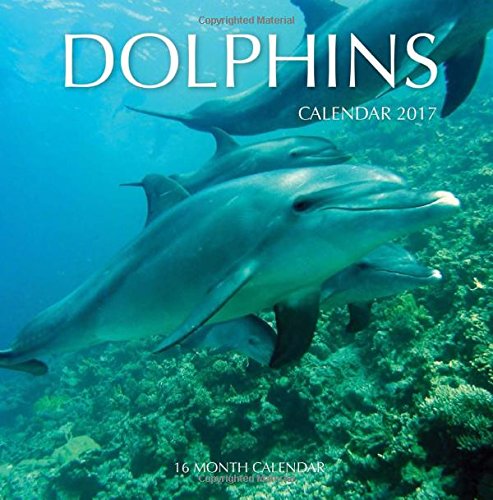
Dolphins Calendar 2017: 16 Month Calendar
Dolphins are well known for their agility and playful behavior, making them a favorite of wildlife watchers. Many species will leap out of the water, spy-hop (rise vertically out of the water to view their surroundings) and follow ships, often synchronizing their movements with one another. Scientists believe that dolphins conserve energy by swimming alongside ships, a practice known as bow-riding.
Dolphins live in social groups of five to several hundred. They use echolocation to find prey and often hunt together by surrounding a school of fish, trapping them and taking turns swimming through the school and catching fish. Dolphins will also follow seabirds, other whales and fishing boats to feed opportunistically on the fish they scare up or discard.
Dolphins have several highly developed forms of communication. They have a “signature whistle” which allows other individuals to recognise them.Dolphins are incredibly social animals. They live in groups and cooperate with each other to get food and in raising offspring (calves).A dolphin calf nurses for up to two years. Calves stay with the mothers anywhere from three to eight years.
Because dolphins are mammals, they need to come to the surface of the water to breathe. Unlike land mammals that breathe and eat through their mouths, dolphins have separate holes for each task. Dolphins eat through their mouths and breathe through their blowholes. This prevents the dolphin from sucking up water into the lungs when hunting, reducing the risk of drowning.
Dolphins have acute eyesight both in and out of the water. They hear frequencies 10 times the upper limit of adult humans. Their sense of touch is well-developed, but they have no sense of smell.
Most dolphins are small, measuring less than 3 metres (10 feet) in length, and have spindle-shaped bodies, beaklike snouts (rostrums), and simple needlelike teeth.
Dolphins are capable of living in either fresh or salt water. Distributed worldwide in all oceans and seas except the Caspian and Aral seas, they range from equatorial to subpolar waters and also can be found in many major river systems.
There are forty species of dolphins and they vary greatly in size. The smallest of the dolphin species, Maui’s dolphin, is around 4 feet long- or as tall as a 9 year old kid – and weighs around 90 lbs. The largest member of the dolphin family is the killer whale, which can grow to 30 feet long. Dolphins feed on fish and squid. They swallow fish whole, despite having 100 teeth in their mouths. The teeth are used to grasp prey. An adult dolphin may consume 30 pounds of fish or more in a single day.
The common and bottlenose dolphins are widely distributed in warm and temperate seas. They are swift swimmers; the bottlenose can attain speeds of nearly 30 km/hr (18.5 mph) in short bursts, and common dolphins are even faster.They are superb divers and have been known to dive as deep as 1,000 feet.
Known for their playful behavior, dolphins are highly intelligent. They are as smart as apes, and the evolution of their larger brains is surprisingly similar to humans.Dolphins are altruistic animals. They are known to stay and help injured individuals, even helping them to the surface to breath. Their compassion also extends across the species-barrier. There are many accounts of dolphins helping humans and even whales.
Dolphin Body Signals
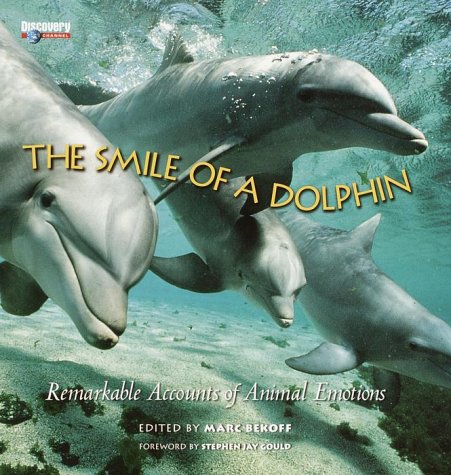
The Smile Of A Dolphin: Remarkable Accounts Of Animal Emotions
Dolphins produce two kinds of vocal signals: pure tones and pulsed sounds.
Pure tones can take the form of whistles , chirps and screams.Scientists refer to these as ‘frequently modulated sounds’, which means that the pitch of the sound changes with time – rising and falling.
Scientists have leaned that dolphins are amazing vocal mimics – able to reproduce manmade whistle structures with precise accuracy. Dolphins produce whistles during social situations, when separated from friends, when excited, when happy and when panicked.
Dolphin Species
There are three different types of dolphins, marine dolphins, river dolphins and porpoises. Some you would never think were part of the dolphin family like the “Killer Whale or Orca”.
A.Marine Dolphins
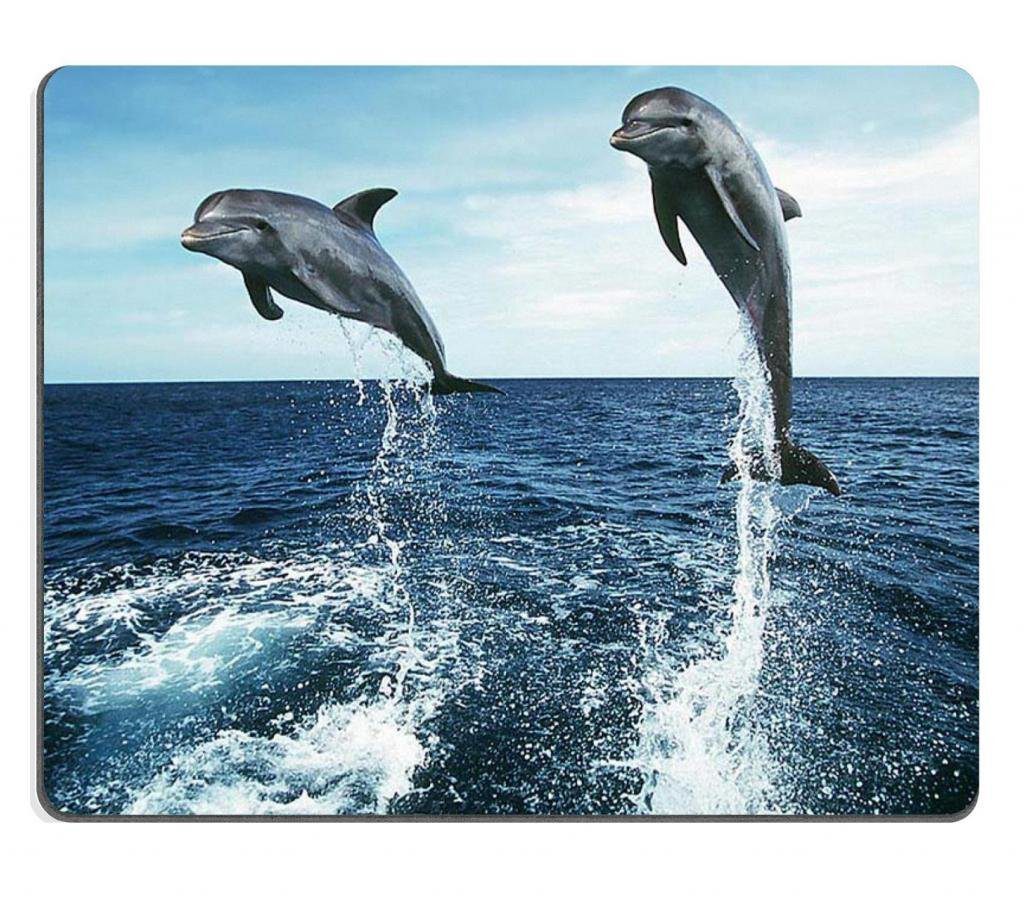
1.White Beaked Dolphin
2.Short Finned Pilot Whale
3.Risso’s Dolphin
4.Pantropical Dolphin
5.Long-Finned Pilot Whale
6.Orcas (Killer Whale)
7.Hourglass Dolphin
8.Heaviside’s Dolphin
9.False Killer Whale
10.Commerson’s Dolphin
11.Bottlenose Dolphin
12.Striped Dolphin
13.Peale’s Dolphin
14.Pygmy Killer Whale
15.Melon-Headed Whale
16.Irrawaddy Dolphin
17.Hector’s Dolphin
18.Frasier’s Dolphin
19.Dusky Dolphin
20.Clymene Dolphin
21.Black Dolphin
22.Southern Right-Whale Dolphin
23.Rough Toothed Dolphin
24.Short Beaked Common Dolphin
25.Pacific White-Sided Dolphin
26.Northern Right-Whale Dolphin
27.Long-Snouted Spinner Dolphin
28.Long-Beaked Common Dolphin
29.Indo-Pacific Hump-Back
30.Atlantic White Sided Dolphin
31.Atlantic Hump-Backed Dolphin
32.Atlantic Spotted Dolphin
White Beaked Dolphin
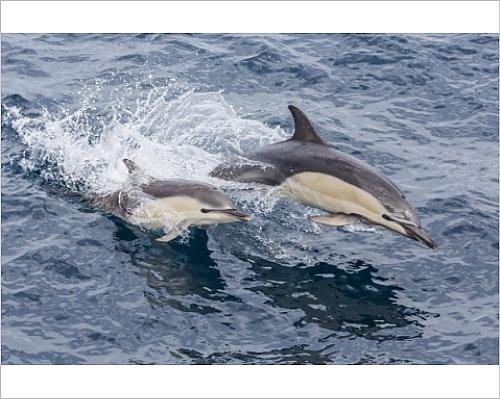
Photographic Print of Long-beaked common dolphin (Delphinus capensis) leaping near White Island
This species is endemic to the temperate and sub-arctic waters of the North Atlantic as far north as the White Sea and occasionally as far south as the Spanish coast. It is common off the Norwegian coast and in the North Sea and is often found in the Baltic Sea as well. Less are found in the northwest Atlantic but there are abundant populations off Labrador and they are found as far south as Cape Cod.
B.River Dolphins
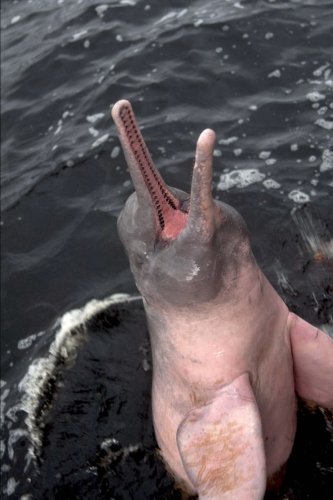
Amazon River Dolphin Journal: 150 page lined notebook/diary
1.Baiji, or Yangtze river Dolphin
2.Boto, or Amazon River Dolphin
3.Franciscana or La plata Dolphin
Yangtze river Dolphin

Witness To Extinction: How We Failed to Save the Yangtze River Dolphin
The Baiji (Yangtze) Dolphin is a species that is found along 1,700km from the Three Gorges to the mouth of the Yangtze River, China.
Classification: This species is the only member of this genus. The Latin, Leipo (‘left behind’) refers to the restricted distribution, whilst vexillifer means ‘to bear a banner’.
Local Names: Chinese River Dolphin; Yangtze Dolphin; Yangtze River Dolphin; Beiji; Pai C’hi; Whitefin Dolphin; Whiteflag Dolphin.
C.Porpoises

Porpoise Vaquita Baby Plush Soft Toy by Hansa. 31cmL. 6804
1.Dall’s Porpoise
2.Finless Porpoise
3.Harbor Porpoise
4.Spectacled Porpoise
5.Vaquita Porpoise
6.Burmeister’s Porpoise
Dall’s Porpoise
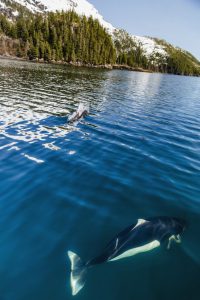
Dall’s porpoises occur throughout the North Pacific Ocean. This species is also found in the adjacent Bering Sea, Sea of Japan, and Okhotsk Sea.
Dall’s porpoises are “high strung,” fast swimming members of the porpoise family and are common in the North Pacific Ocean. They can reach a maximum length of just under 8 feet (2.4 m) and weigh up to 480 pounds (220 kg). Males are slightly larger and thicker than females, which reach lengths of just under 7 feet (2.1 m) long.
Dall’s porpoises have a relatively small, triangular head with little or no beak and a thick, robust body. The flippers are small, round, and located forward on the body. The dorsal fin is positioned in the middle of the back, triangular in shape, and often cant, or angles, forward.
Dolphin Habitats

Dolphins are found living in bodies of water around the world.Most of them live in saltwater but they can also live in freshwater locations. Only a handful of the species though are known to thrive in freshwater regions. They tend to stick to the shallow areas of the water found along the continental shelves. The types of dolphins you will find depend on the species though in terms of the location.
Dolphins tend to like areas that have warmer temperatures too. However, sometimes they are found in colder water due to the need for food.Studies show that the habitat of the dolphin is quite diversified due to environmental factors and food accessibility.
Migration is a big part of life for all dolphins. They have to move where there is food so the amount of migrating they will do can vary. Some of them have been observed in a very small area all the time due to plenty of food being found there. The migration can be for a short period of time or until food resources have started to be replenished.
This is also why some locations where there used to be dolphins either have very few or they haven’t been seen for a while. They aren’t going to be returning to locations where the habitat is too polluted or there isn’t enough food for them to survive. Even changes to the water temperatures can be reasons for them no longer to return to locations they once called home.It is believed that global warming plays a vital role in the migration for dolphins as it affects their supply of food.
The dolphin can be very vulnerable to problems in their environment. For example pollution due to the sensitivity of their skin. Loss of habitat is also a problem due to the fact that so many humans have now taken to enjoying a variety of water related activities in these same locations.
In the wild, dolphins face many manmade threats to their well-being. There are direct threats from countries that still permit the hunting of dolphins for food or their capture for entertainment. But there are even greater threats from indirect sources like industrial fishing where dolphins are caught in large numbers as bycatch.
Feeding wild dolphins disrupts their social groups which threatens their ability to survive in the wild. Young dolphins do not survive if their mothers compete with them for hand-outs and don’t teach them to forage.
The “Flipper myth” of a friendly wild dolphin has given us the wrong idea. Flipper was actually a trained, captive dolphin who did not bite the hand that fed him. However, truly wild dolphins will bite when they are angry, frustrated or afraid. When people try to swim with wild dolphins, the dolphins are disturbed. Dolphins who have become career moochers can get pushy, aggressive and threatening when they don’t get the hand-out they expect.
Whales and dolphins may travel considerable distances but they have key areas which are critical to them, as ongoing ‘homes’ or for seasonal breeding or feeding grounds. If we protect these areas well, the chances of survival for whole populations improve.A marine reserve usually has the highest level of protection. This can mean no commercial fishing or industrial use of the area.
We urgently need to create effective marine protected areas and reserves – safe havens that help to preserve the habitat critical for whales and dolphins in all the oceans of the world.
To protect them from the dangers of pollution, fishing nets, hunting, live-capture and to safeguard the places that they call home – before more of these vulnerable and endangered populations disappear from our planet.We can make sure that those who represent us in government make the right policies, to have areas where dolphins and whales are truly safe.
If you have any information,questions, or feedback you would like to include in this post.
Please email momo19@naturekingdoms.com or leave your comments below.